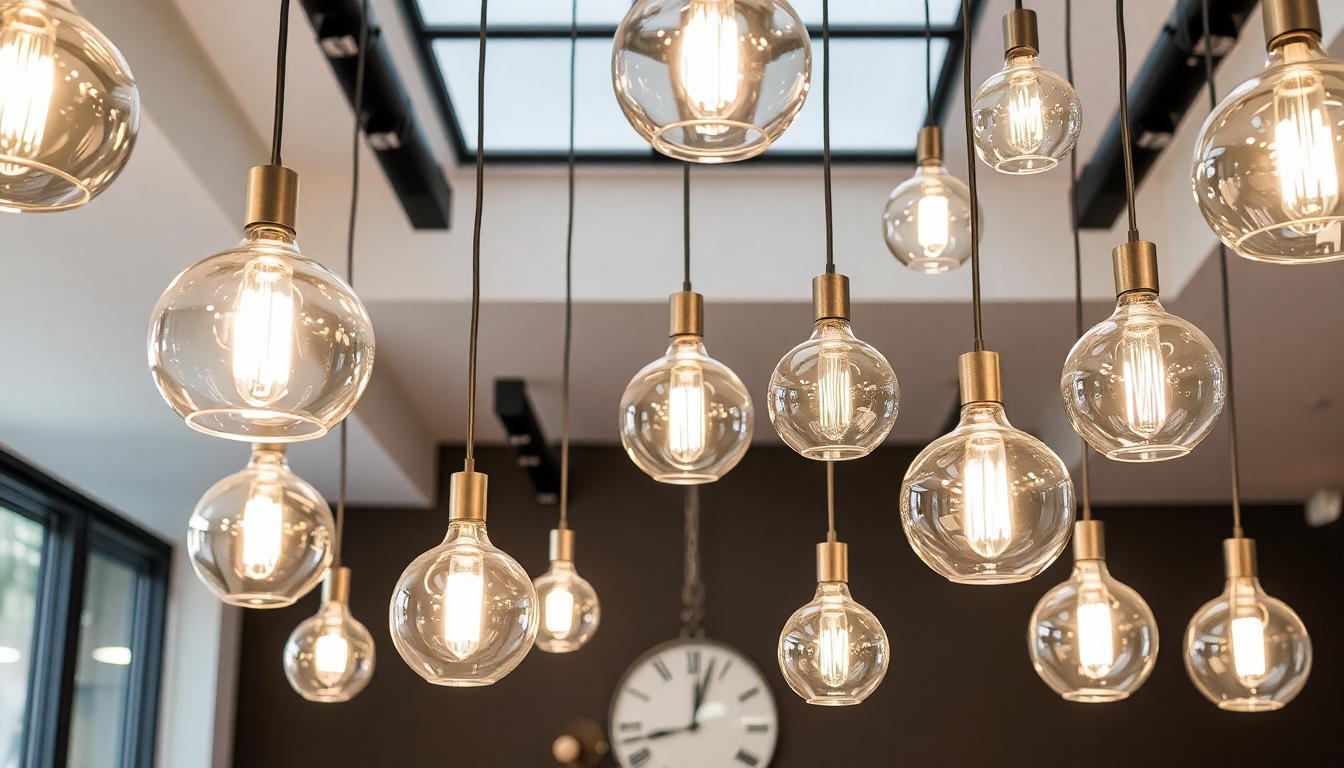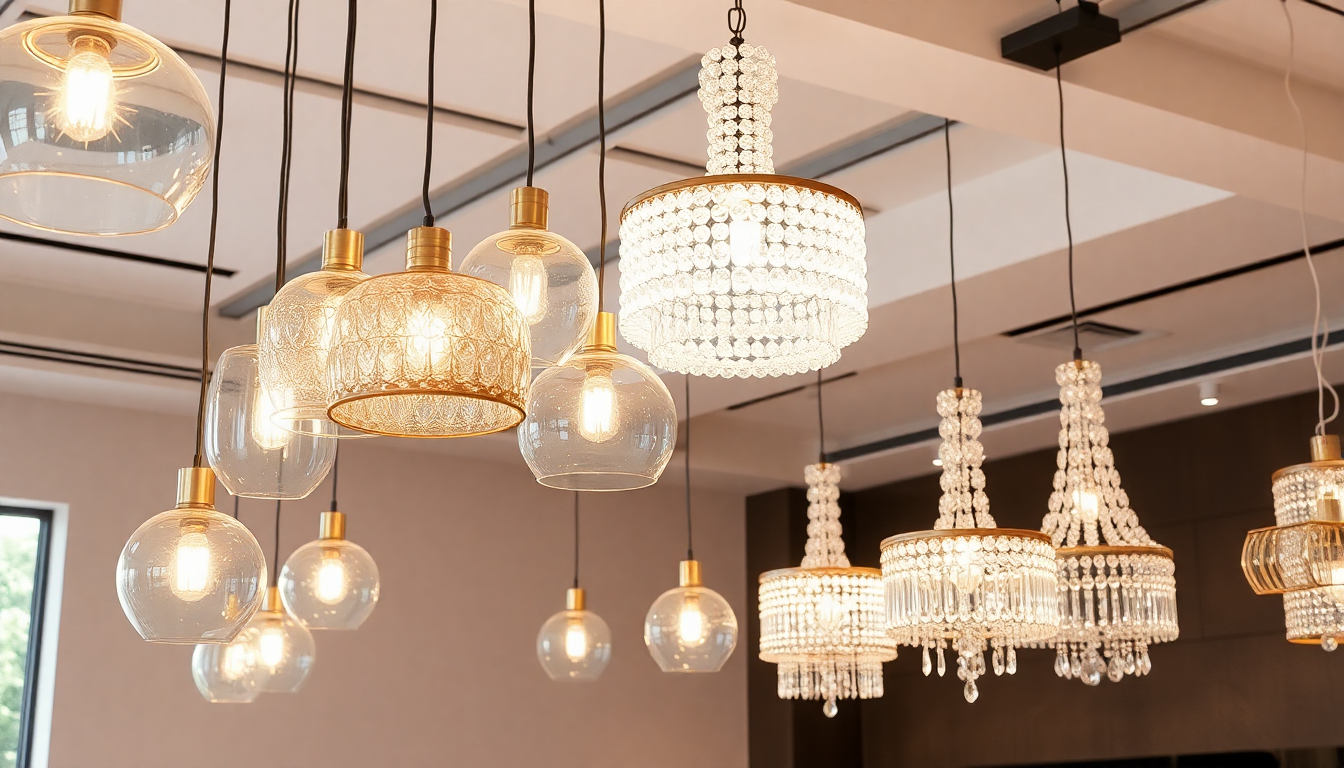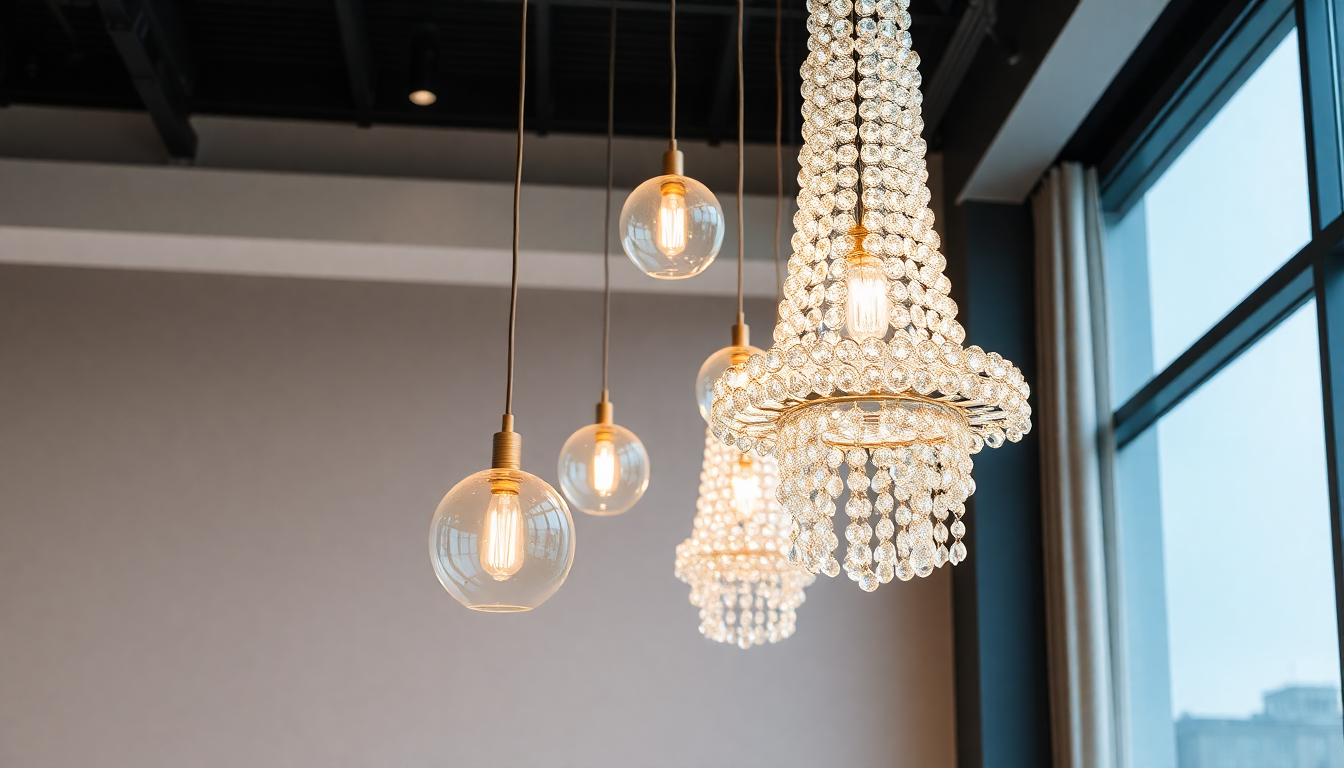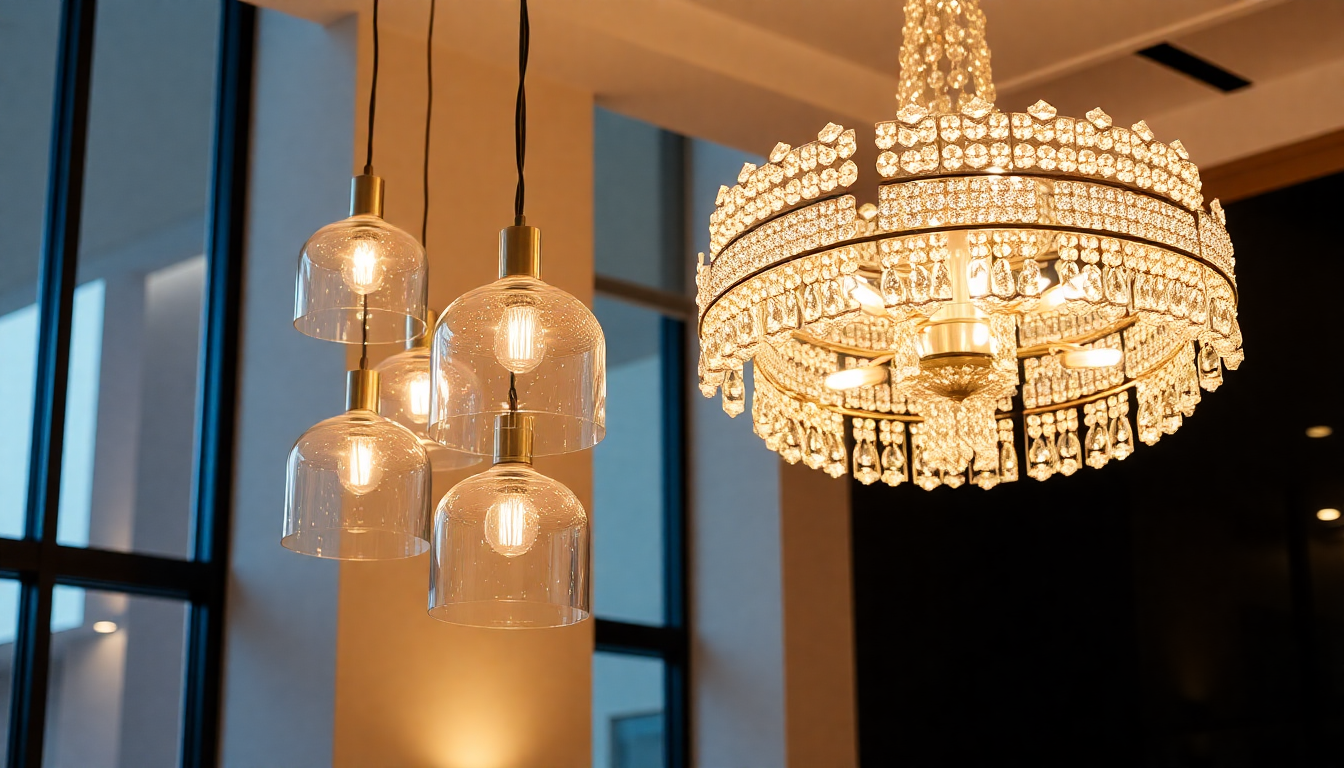Introduction: Why the Right Chandelier and Glass Pendant Lights Matter
Lighting is more than illumination — it's design, mood, and function fused into one. The right chandelier or cluster of glass pendant lights can transform a hallway into a grand entry, make a kitchen island the heart of the home, or convert a bland dining room into an elegant entertaining space. This comprehensive guide covers everything you need to choose and style milk glass pendant light options, stained glass pendant light pieces, blown glass pendant lights and crystal chandeliers — with practical tips for luxe looks on a budget, installation, maintenance, and up-to-the-minute 2025 trends.
What You'll Learn in This Guide
- How to choose the right chandelier for your space and scale it correctly
- Differences and uses of clear, frosted, milk, stained and blown glass pendant lighting
- How to style glass pendant lights in minimalist, contemporary, and eclectic interiors
- Budget strategies to get a high-end look without overspending
- Installation, bulb, dimmer and maintenance advice for safe long-lasting lighting
- Room-by-room styling ideas and mixing-and-matching guidance
Understanding Glass Types: Milk, Stained, Blown, Frosted & Clear
Choosing the glass type is one of the most important decisions. Each glass type alters light quality, aesthetics and perceived cost.
- Milk glass (milk glass pendant light): Opaque, soft white glass that produces diffused, glare-free light. Perfect for ambient fixtures and minimalist schemes where soft illumination is preferred.
- Stained glass (stained glass pendant light): Colored glass panels fused into decorative patterns. Ideal for statement fixtures or rooms needing a focal accent with artisanal character.
- Blown glass (blown glass pendant lights): Handblown or machine-blown glass creates organic shapes and unique variations. Blown glass can be clear, colored or textured — excellent for contemporary and eclectic spaces.
- Frosted glass: Partially translucent glass that softens and spreads light. A great middle ground if you want some glow without total opacity.
- Clear glass: Transparent and brilliant — best for task lighting or to showcase decorative bulbs and internal details.
How to Choose the Perfect Chandelier: Scale, Placement & Proportion
Choosing a chandelier is part math, part aesthetics. These rules help you get the scale right so the fixture complements — rather than overwhelms — the room.
- Room diameter method: Add the length and width of the room (in feet) and convert that total to inches to get a rough chandelier diameter. Example: 12ft + 14ft = 26ft → 26in diameter. Adjust up or down based on ceiling height and furniture scale.
- Dining table width: A chandelier over a dining table should be about half to two-thirds the width of the table. For an 84" table, consider a fixture 42"–56" wide.
- Ceiling height: For an 8ft ceiling, allow 30"–36" between table top and chandelier bottom. For every additional foot of ceiling height, add 3" to the hanging distance. For foyer or entryways, chandelier bottom should be a minimum of 7ft above finished floor.
- Multiple fixtures: For a row above an island, use fixtures totaling the recommended width rather than one oversized fixture. Spacing 24"–30" between centers is common for pendant rows above islands.
- Balance with furniture: Larger furniture anchors can handle bigger chandeliers; lightweight furniture benefits from delicate or mid-sized fixtures.
Luxury Lighting on a Budget: How to Get a High-End Look Without Splurging
High-end appearance isn't always about price. Follow these principles to make affordable glass pendant lighting and glass chandeliers look expensive:
- Choose quality finishes: Even on a budget, polished metal finishes (matte brass, nickel, blackened bronze) elevate the fixture. Consistent metal finishes across the room create a designer feel.
- Opt for glass and crystal accents: Reflective materials like blown glass and crystal components catch light and imply luxury.
- Scale and proportion: A well-scaled fixture always reads higher-end. Oversized or perfectly proportioned chandeliers create drama.
- Use multiple light sources: Repeating pendants or layered lighting (pendant + recessed) visually enriches a space.
- Smart bulbs and dimmers: Tunable white LEDs and dimmers instantly add depth and mood that feel luxurious.
Example budget-friendly picks (replace with your store links) — each uses glass to amplify perceived value:
-
Milk Glass Pendant Light — Soft Ambient Option

-
Handblown Clear Glass Pendant — Sculptural & Affordable

-
Glass Chandelier with Crystal Drops — Luxe Look for Less

How to Style Glass Pendant Lights in Different Interiors
Styling depends on the interior language of your home. Below are approaches for popular aesthetics.
Minimalist Interiors
- Choose simple silhouettes — single globe milk glass pendant lights or clear blown glass with minimal hardware.
- Stick to neutral palettes. A milk glass pendant light pairs well with white, beige and soft gray walls.
- Let form be the focal point: an oversized blown glass piece can be the only sculptural element in the room.
Contemporary & Modern
- Use asymmetry and clusters. Multiple blown glass pendant lights at staggered heights create rhythm.
- Select mixed materials — glass plus matte black or brushed brass hardware — for contrast.
- Consider clear glass pendant lights to showcase retro filament or designer LED bulbs.
Traditional & Eclectic
- Stained glass pendant light fixtures add color and craft — ideal for eclectic living rooms or vintage-inspired dining areas.
- Crystal chandeliers enhance traditional spaces; choose layered crystals for maximum sparkle.
Industrial & Rustic
- Pair clear blown glass pendants with aged bronze or blackened metal for an industrial look.
- Milk and frosted glass pendants work well to soften exposed materials like brick and wood.
Room-by-Room Lighting Strategies
Practical lighting plans vary by room function. Here are detailed recommendations.
Kitchen
- For islands: 3 matching pendants spaced evenly, 30"–36" above the countertop. Choose blown glass pendant lights for a modern sculptural look or milk glass pendant light varieties for soft task light.
- Over sink: a single clear or frosted glass pendant to provide task illumination.
- Consider under-cabinet and recessed lights for layered task lighting.
- Suggested product: Linear Glass Pendant Set — Trio for Islands

Dining Room
- Center the chandelier over the table. Use the table width rule (chandelier width = 1/2 to 2/3 table width).
- For modern dining rooms, a cluster of blown glass pendant lights at varied heights creates a dramatic centerpiece.
- For formal rooms, choose a crystal chandelier for maximum presence.
- Suggested product: Crystal Chandelier — Luxe Foyer & Dining Statement

Living Room
- Use pendant clusters or a central chandelier depending on ceiling height. Avoid pendants that hang too low in seating areas.
- Use accent pendants beside a fireplace or above side tables for layered illumination.
Entryway & Staircases
- High ceilings welcome tall chandeliers or multi-tiered crystal pieces for dramatic effect.
- For narrow entryways, a line of blown glass pendants can create elegant vertical interest.
Bedroom
- Swap bedside table lamps for pendant lights to free up surface space — milk glass pendant light options work well for soft bedside glow.
- Keep fixtures dimmable and warm (2700K–3000K) for comfortable atmospheres.
Bathroom
- Use rated fixtures for damp locations; pick frosted or milk glass pendants for flattering, even light near mirrors.
- Install fixtures to avoid direct glare into eyes; backlighting or side lighting is often better for vanity tasks.
Home Office
- Prioritize task lighting with clear or frosted glass pendants placed to reduce screen glare. Consider adjustable-height pendants for flexibility.
Outdoor Covered Spaces
- Choose fixtures rated for outdoor/damp locations; blown glass pendants can add elegant ambiance to a covered porch when rated appropriately.
Bulbs, Color Temperature & Dimming: Get the Light Right
Choosing the right bulb and controls is as important as the fixture itself.
- Bulb type: Use LED bulbs for energy efficiency and long life. Many LEDs now mimic filament bulbs for vintage looks while remaining efficient.
- Color temperature: 2700K–3000K for warm, cozy spaces (living, bedroom, dining); 3000K–4000K for task-oriented areas like kitchens and offices.
- CRI (Color Rendering Index): Choose bulbs with CRI 90+ for accurate color rendering, especially important in kitchens, bathrooms, and areas where color matters.
- Dimming: Ensure bulbs are dimmable and compatible with your dimmer type (triac, ELV, or smart dimmers). Smart bulbs add convenience and tunable white capability.
Wiring, Installation & Safety Tips
If you're not experienced with electrical work, hire a qualified electrician. But knowing what to expect helps you plan.
- Turn off circuit power at the breaker before working on fixtures.
- Confirm the junction box can support the fixture weight — heavy crystal chandeliers often require reinforced boxes or dedicated support.
- Use the appropriate mounting hardware and ensure fixture mounting plates align correctly.
- For multi-light pendant clusters, confirm the canopy and wiring match the number of fixtures and that wires are neatly managed in the ceiling canopy.
- Use LED-compatible dimmers and check compatibility notes on product pages.
Maintenance and Cleaning: Keep Glass Fixtures Sparkling
- Turn power off before cleaning. Dust regularly with a dry microfiber cloth to prevent build-up.
- For deeper cleaning, remove glass shades and wash in warm soapy water; dry thoroughly before reinstalling.
- For crystal components, use a 50/50 mix of isopropyl alcohol and distilled water sprayed on a cloth (not directly on fixture) for streak-free clarity.
- Inspect mounting hardware and wiring periodically for signs of wear or looseness.
Mixing and Matching Glass Pendants: Rules for a Cohesive Look
Mixing pendants can create signature looks when done with intent:
- Limit variation: Keep to two design families (for example, blown glass shapes + small crystal drops) to avoid visual overload.
- Unify with finish: Use the same metal finish across mixed pendants to create harmony.
- Repeat one element: Repeating a color or glass tone ties diverse shapes together.
- Play with height: Staggering heights creates sculptural interest and depth.
Statement Glass Pendants: Making Lighting the Focal Point
Statement pendants can be art pieces. To maximize impact:
- Choose a bold silhouette or a vibrant stained glass pendant light to draw attention.
- Position centrally and ensure background surfaces (like a plain wall or simple ceiling) don’t compete visually.
- Layer with secondary lighting (recessed or wall sconces) to highlight the pendant and prevent harsh shadows.
- Example statement options: Stained Glass Pendant and Handblown Glass Cluster Pendant.


Budget Ranges & What to Expect
Pricing varies widely depending on materials, craftsmanship and brand. Here are general ranges as of 2025:
- Under $150: Simple single-globe glass pendants (machine-made glass, basic hardware). Great for small projects and rentals.
- $150–$600: Higher-quality blown glass pendants, multi-light fixtures, and mid-range crystal chandeliers with good finishes.
- $600–$2,000+: Handblown, artisan, or designer glass pendants and multi-tier crystal chandeliers. Expect better materials, unique shapes, and more refined finishes.
- $2,000–$10,000+: Large-scale, high-end crystal chandeliers, bespoke stained glass fixtures, and custom artisan blown glass installations.
Sustainable & Smart Lighting Choices
- LED first: Select LEDs to reduce energy use and heat output. LED lifespans reduce bulbs replacement frequency.
- Recycled glass: Many artisans now use recycled glass for blown and stained fixtures — eco-friendly and often beautifully textured.
- Smart controls: Smart dimmers and bulbs allow scheduled scenes, tunable white and remote control for convenience and energy savings.
Trends for 2025: What’s Popular in Glass Pendant Lighting
- Organic blown glass shapes that resemble natural forms (bubbles, pebbles) are increasingly popular for contemporary interiors.
- Milk glass revival — designers are using milk glass pendant lights in minimalist and Japandi interiors for soft, diffused light.
- Artisan stained glass is experiencing a renaissance as homeowners seek handcrafted, colorful accents.
- Mixing materials — combining glass with sustainable wood or matte metals for tactile contrast.
Common Mistakes to Avoid
- Choosing a chandelier that’s too small for the room. Under-scaled lighting looks like an afterthought.
- Ignoring bulb color temperature — harsh cool light in a living space can ruin ambiance.
- Failing to verify weight support — large crystal chandeliers require additional ceiling reinforcement.
- Mixing too many styles without a unifying element (finish, color or repeated shape).
Practical Buying Checklist
- Measure room dimensions and ceiling height before shopping.
- Decide on glass type: glass pendant lights, milk glass pendant light, stained glass pendant light, blown glass pendant lights, or crystal chandelier.
- Check bulb type, dimmer compatibility and CRI.
- Confirm fixture weight and mounting requirements.
- Evaluate finish options and how they coordinate with room hardware.
- Review warranty, return policy and artisan authenticity for handblown or stained pieces.
Frequently Asked Questions (FAQs)
What is the difference between milk glass and frosted glass?
Milk glass is an opaque white glass with a porcelain-like finish that diffuses light uniformly. Frosted glass is clear glass treated to be translucent; it allows some light transmission while softening glare. Milk glass creates a more opaque, vintage look, while frosted glass has a modern, airy feel.
Are blown glass pendants fragile?
Handblown glass can be delicate but is structurally sound when properly mounted. Handle with care during installation and cleaning. Many blown glass pendants are tempered or thickened to improve durability.
Can I use glass pendant lights in bathrooms?
Yes, but choose fixtures rated for damp or wet locations. Milk or frosted glass pendant lights are ideal for vanity areas to avoid glare and create flattering light.
How do I choose the right size chandelier for a foyer?
Consider both floor-to-ceiling height and entry footprint. As a guideline, add the foyer dimensions (in feet) and convert to inches for approximate diameter. For two-story foyers, large multi-tier chandeliers can create the right drama; consult an electrician to confirm structural support.
Where to buy quality glass pendants and crystal chandeliers?
Shop from reputable retailers and artisan studios. If you prefer instant inspiration, begin with curated collections such as:
- Glass Pendant Lights Collection
- Milk Glass Pendant Light Series
- Stained Glass Pendant Light Creations
- Blown Glass Pendant Lights Gallery
- Crystal Chandelier Collection
Featured Product Gallery — Mix & Match Ideas
Below are curated pairings to help you visualize combinations. Replace product URLs with your store-specific links for immediate shopping.
-
Milk Glass Pendant Light — Perfect for bedside or entry ambient lighting.

-
Stained Glass Pendant Light — Use as a dining room accent to introduce color and craft.

-
Blown Glass Pendant — Handblown Options — Sculptural forms for modern kitchens and statement clusters.

-
Crystal Chandelier — Luxe Foyer Statement — Grand entrances and formal dining settings.

Case Studies: Real-World Applications
Case Study 1 — Modern Kitchen Island (Milky Warmth)
Challenge: A contemporary kitchen with stainless appliances needed soft task light without glare. Solution: A trio of milk glass pendant light shades in matte brass hardware, LED warm 3000K bulbs, and a dimmer for dinner ambiance. Result: Functional prep lighting and a clean, cohesive look that reads high-end.
Case Study 2 — Eclectic Dining Room (Stained Glass Focal)
Challenge: An eclectic home sought a vibrant focal point above a reclaimed wood table. Solution: A medium-stature stained glass pendant light with warm-hued panes and adjustable chain for exact hanging height. Result: The pendant became an artful anchor; paired with recessed lights for balanced illumination.
Case Study 3 — Small Foyer (Blown Glass Drama)
Challenge: A narrow entryway needed height and light without overwhelming scale. Solution: A vertical cluster of small blown glass pendant lights staggered over the stair landing, with clear glass to bounce light. Result: The vertical composition visually expanded the space and created an unexpected design moment.
Final Thoughts: Make Lighting Your Signature
Choosing the right chandelier or glass pendant lighting is an investment in mood, utility and style. From milk glass pendant light options that offer quiet elegance to sculptural blown glass pendant lights and colorful stained glass pendant light works, the possibilities are endless. Use the scale formulas, bulb and dimming guidance, and styling rules in this guide to make confident choices that elevate your home in 2025 and beyond.
Ready to explore specific fixtures? Start with these collections: glass pendant lights, milk glass pendant light, stained glass pendant light, blown glass pendant lights. If you'd like personalized recommendations, share your room photos and measurements and we'll propose fixture options that fit your budget and style.
SEO keywords used: glass pendant lights, glass pendant lighting, milk glass pendant light, stained glass pendant light, blown glass pendant lights.




